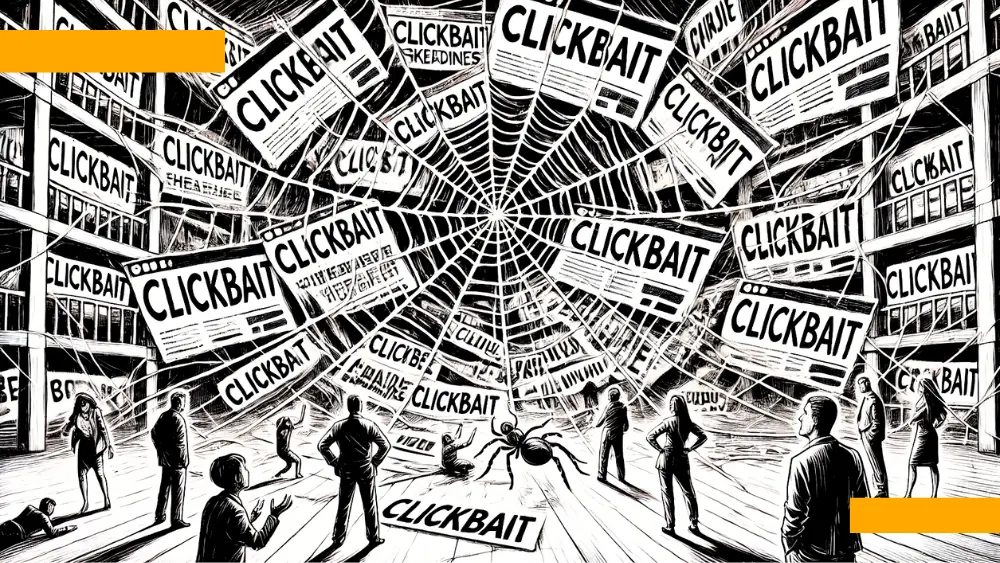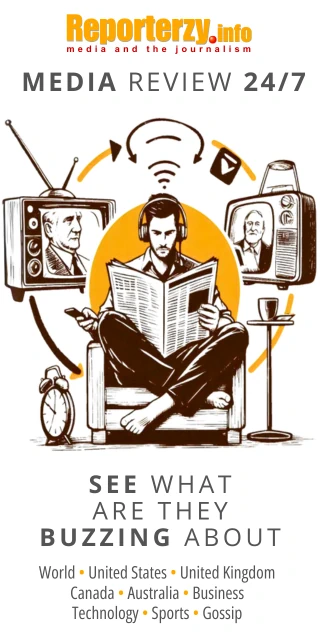 illustration: DALL-E
illustration: DALL-EHeadlines on the internet have become longer, more negative, and surprisingly similar to clickbait. Research conducted by Pietro Nickl, Mehdi Moussaïd, and Philipp Lorenz-Spreen from the Max Planck Institute for Human Development shows that since the beginning of the 21st century, there has been a significant change in how online media headlines are constructed.
To analyze around 40 million headlines from four major English-language sources - The New York Times, The Guardian, The Times of India, and ABC News Australia, researchers used NLP methods, sentiment analysis, and regression models to detect language changes. The results were published in the article "The Evolution of Online News Headlines" in Nature Humanities and Social Sciences Communications, revealing a clear trend toward more clickable, emotional content.
Longer and more emotional headlines
Over two decades, online media headlines have increased in length by an average of 25%. In 2000, a headline in The New York Times typically took the form of a short sentence fragment, like "Shell`s future in Nigeria in doubt." Today, they more often take the form of a complete sentence, similar to clickbait from Upworthy: "I`m No Supreme Court Expert, But I Kinda Think You Shouldn`t Be Able To Pay For This?".
The report shows that full sentences and questions are replacing traditional short headlines. This phenomenon is driven by growing competition for readers` attention online. Algorithms favor content that triggers reactions, such as clicks or shares, giving an advantage to longer and more emotional headlines.
Clickbait not just in tabloids
Interestingly, these changes are not limited to low-quality media. Researchers observed similar trends in high-reputation outlets like The Guardian and The New York Times. Negative headlines are now more common than positive ones, further emphasizing the dominance of emotion over facts.
- The number of headlines with a negative tone has increased by 30% over the past 20 years.
- More headlines include personal pronouns and questions to pique the reader`s curiosity.
- The number of headlines containing words like "why" and "how" is rising, indicating an attempt to draw readers into the narrative.
Algorithms and A/B strategies
Media are increasingly using A/B testing to optimize headlines. An example is Upworthy, which experimented with different variants to maximize click-through rates. From 2013 to 2015, this model dominated Facebook until the algorithm changed to favor more engaging content rather than mere clicks. As a result, clickbait-style headlines became somewhat less popular, although they are still widely used.
Although clickbait styling offers tangible benefits in terms of higher click numbers, it also raises ethical and social issues. It undermines trust in media and contributes to misinformation. Moreover, promoting negative content encourages social polarization, especially in media with extreme political sympathies.
| Headline Features | Increase from 2000 to 2025 |
|---|---|
| Length (number of words) | +25% |
| Negative wording | +30% |
| Personal pronouns | +20% |
| Questions and interrogative pronouns | +15% |
Research results indicate that these changes occur regardless of journalistic quality or political sympathies. This means that even reputable sources are adapting to the rules governing the online attention market, where the most engaging headlines prevail.
Can it be changed?
Experts believe that changing the algorithms that promote content on social media could solve the problem. An example is The Guardian, which placed a "Most Read" section next to "Most Shared" on its website, allowing users to make more informed choices.
A list of potential solutions includes:
- Increasing algorithm transparency on social media platforms.
- Media literacy education to help users distinguish reliable content from clickbait.
- Promoting socially valuable content rather than just visually appealing material.
Headlines on the web have ceased to be just information. They have become a product designed to sell emotions and clicks. While this trend may seem irreversible, it is essential to remember that changing algorithms could bring a more balanced approach to creating and consuming content online.
The research report "The Evolution of Online News Headlines" is available at
https://www.nature.com/articles/s41599-025-04514-7
COMMERCIAL BREAK
New articles in section Media industry
Investigative journalism in Europe. Newsrooms face pressure
KFi, Newseria
Media and political representatives point to the difficult situation of investigative journalism in Europe. Newsrooms are reluctant to invest in this segment due to high costs and the large amount of time and effort required. Most of all, however, they fear legal proceedings.
Energy under attack. Disinformation threatens Poland’s power transition
KFi
One in five online messages about energy may be fake. Between 2022 and 2025 nearly 70,000 publications warning and condemning disinformation in this strategic sector were recorded in Polish media. They generated a reach of 1.19 billion impressions.
AI changes the game. A new face of internet search
KFi
Half of consumers in the US already use AI-powered search. By 2028, purchase decisions worth $750 billion will be made through AI. These findings come from McKinsey’s report "Winning in the age of AI search".
See articles on a similar topic:
Disinformation and Fake News. Experts Discuss Challenges for Journalists
RINF
The pandemic, followed by the war in Ukraine, triggered a massive wave of disinformation in media and social channels. Experts at the Impact’22 Congress in Poznań and the European Economic Congress in Katowice discussed effective strategies to combat disinformation.
Clickbait Uncovered. How Online Headlines Evolved Over 25 Years
Krzysztof Fiedorek
Researchers from the Max Planck Institute analyzed 40 million headlines from the past 25 years. They are getting longer, more emotional, and negative, with a clear influence of clickbait style. Even reputable media use strategies and tricks to grab attention.
"No One Should Know the Truth" [DOCUMENTARY FILM]
BARD
According to the Belarusian Association of Journalists, around 554 journalist detentions occurred in Belarus between August 2020 and July 2023. Criminal charges were brought against 73 media workers, and 33 of them remain in prison to this day.
User Generated Content. A minefield for journalists and media
Krzysztof Fiedorek
Over 40% of internet users judge information credibility by likes and views. Only 20% use traditional news channels as a main and first source. A Reuters Institute report highlights the scale and risks of User Generated Content and offers advice on how media can avoid falling into its trap.






























